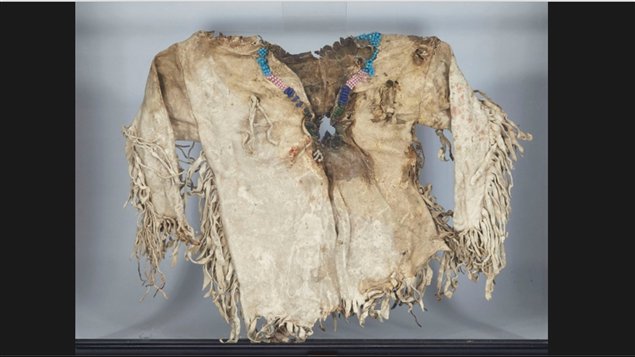Complaints on social media prompted Waddington’s to pull from auction a small aboriginal child’s leather tunic with a bullet hole and dried blood in the chest area. The gruesome artifact was part of a collection belonging to the late William Jamieson, a world-renowned dealer of tribal art and collector of macabre items, including electric chairs and shrunken heads. Some pieces, including the tunic, were to be auctioned on Tuesday, April 29.

“Maybe my first reaction was outrage, I guess,” said Hayden King, an assistant professor of Politics and Indigenous Governance at Ryerson University and a member of the Ojibwe and Pottawotami First Nations.
‘Like genocide memorabilia’
“I guess native people have come to expect this sort of thing, you know, cultural artifacts, items that are important to our community being auctioned off or (placed) in museums or stolen from graves. But this particular case was, I think, a little bit more offensive. This is like genocide memorabilia.”
That the tunic was removed from auction was of little consolation to King who points out it will probably be sold in some other way. He notes that in the United States there are some laws forcing museums to return bones and artifacts to native communities, but there has not been as much progress on the issue in Canada.
“I think a lot of Canadians either think that native people are extinct or these (kinds of) items are legitimately acquired, when really they are stolen so there’s not a lot of pressure to end these kind of practices,” says King.
That someone would want to hang on a wall or otherwise showcase the tunic of a child who had been shot is particularly grotesque in King’s view. “I think that it kind of celebrates colonization and it even celebrates, you know, ethnic cleansing and genocide. If that’s not common sense to people, we have a serious problem in Canada.”







For reasons beyond our control, and for an undetermined period of time, our comment section is now closed. However, our social networks remain open to your contributions.